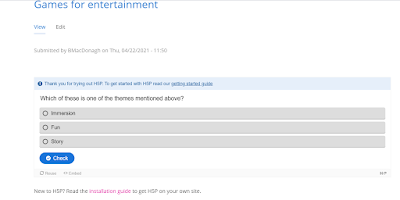Games Testing
Testing Techniques
Functionality Testing : this is
Combinatorial Testing : this way you can effortlessly test the game rapidly in its earliest stages. Initially, the initial step is to discover how much testing your game necessitates. For this reason, you can use this particular type of testing to determine whether the game satisfies the definite requirements or functions bug-free.
Ad Hoc Testing : This technique is referred as ‘’general testing’’ is a less structured way of testing and it is randomly done on any section of the gaming application. Specifically, there are two distinct types of ad hoc testing. This kind of testing works on the technique called “error guessing” and requires no documentation or process or planning to be followed.
Compatibility Testing :
Clean Room and Tree Testing : This type of test helps to ensure the consistency as well as reliability of the gaming software. The aim of conducting this clean room testing is to produce a product with negligible errors. On the flip side, tree testing is a game testing method similar to the usability testing that helps organize the test cases and make the exact choice of tests best suitable for a given set of code amendments.
Regression testing : This type of testing
Performance Testing :
QUALITY IS IMPORTANT
During the last ten years video games have begone to replace traditional games and influencing how people in general spend their time. Studies have shown that the game industry has grown enormously, acquiring billions of dollars over the last few years, and has reaching a well-established status along side other popular entertainment industries, such as music and cinema. They have done this by trying to make quality games with as few glitches and bugs as possible and to do this they need special software specifically for games, and because of this game companies and software companies go hand in hand. When using this special software they have to make there are no problems so it has to go through a large about of testing before it is used to make a game.
The testing is divided into five parts
(1)Requirement Analysis: focused on the understanding of requirements in terms of what will be developed and tested.
(2)Test Planning: focused on the construction of the artifacts that will guide the software development and execution
(3)Test Design: focused on the process of writing test cases, and if required, the creation of scripts for automation.
(4)Test Execution: in summary, is the process of setup the environment required to execute the tests and then, perform all the tests, which also includes reporting test results, logging defects, verification and retesting
(5)Test Closure: discussions about the testing artifacts and evaluation of the process applied occur at this phase.
In general, games differ from regular software due to specific traits related to the complexity of human interactions characteristic in this type of software. Therefore, there are metrics that are difficult to observe and test, such as user behaviors, entertainment and fun, and these aspects might directly impact test activities, such test planning, development of test cases and even test execution. Thus, practitioners should be aware of these differences in order to improve the testing process, and this study is a step forward to this understanding.
References:
Computer Games Are Serious Business and so is their Quality: Particularities of Software Testing in Game Development from the Perspective of Practitioners. Available at: <file:///C:/Users/Bernard/Downloads/Computer%20games%20are%20serious%20business%20and%20so%20is%20their%20quality.pdf> [Accessed 8 December 2020].
Niranjan Limbachiya, 7 Different Types of Game Testing Techniques. Available at: <https://dzone.com/articles/7-different-types-of-game-testing-techniques> [Accessed 8 December 2020].




Comments
Post a Comment